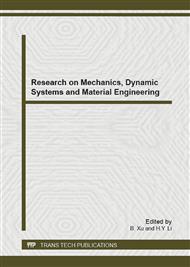p.93
p.100
p.104
p.109
p.113
p.117
p.121
p.125
p.130
Hydrocyclone Velocity Flow Simulation and Experimental Study Based on Fluid Mechanics
Abstract:
The strong swirl turbulent flow in hydrocyclone causes major difficulties in modeling their internal solid-liquid flows. In this thesis, the strongly swirling turbulent flow in solid-liquid hydrocyclone separators is simulated by using Reynolds stress equation models (RSM) of FLUENT applications to use the body-fitted and partition meshes. The results give some new understanding on 3D velocity distribution. According to the numerical simulation results, the lab experiment is implemented in this thesis.the lab simulation system and real-time data process system are set up to gather the parameters in the simulation system. the relation curve of production capacity-inlet pressure and separation property-inlet pressure are analyzed. Comparing with the numerical simulation ,the result is reasonable.
Info:
Periodical:
Pages:
113-116
Citation:
Online since:
December 2012
Authors:
Keywords:
Price:
Сopyright:
© 2013 Trans Tech Publications Ltd. All Rights Reserved
Share:
Citation:


